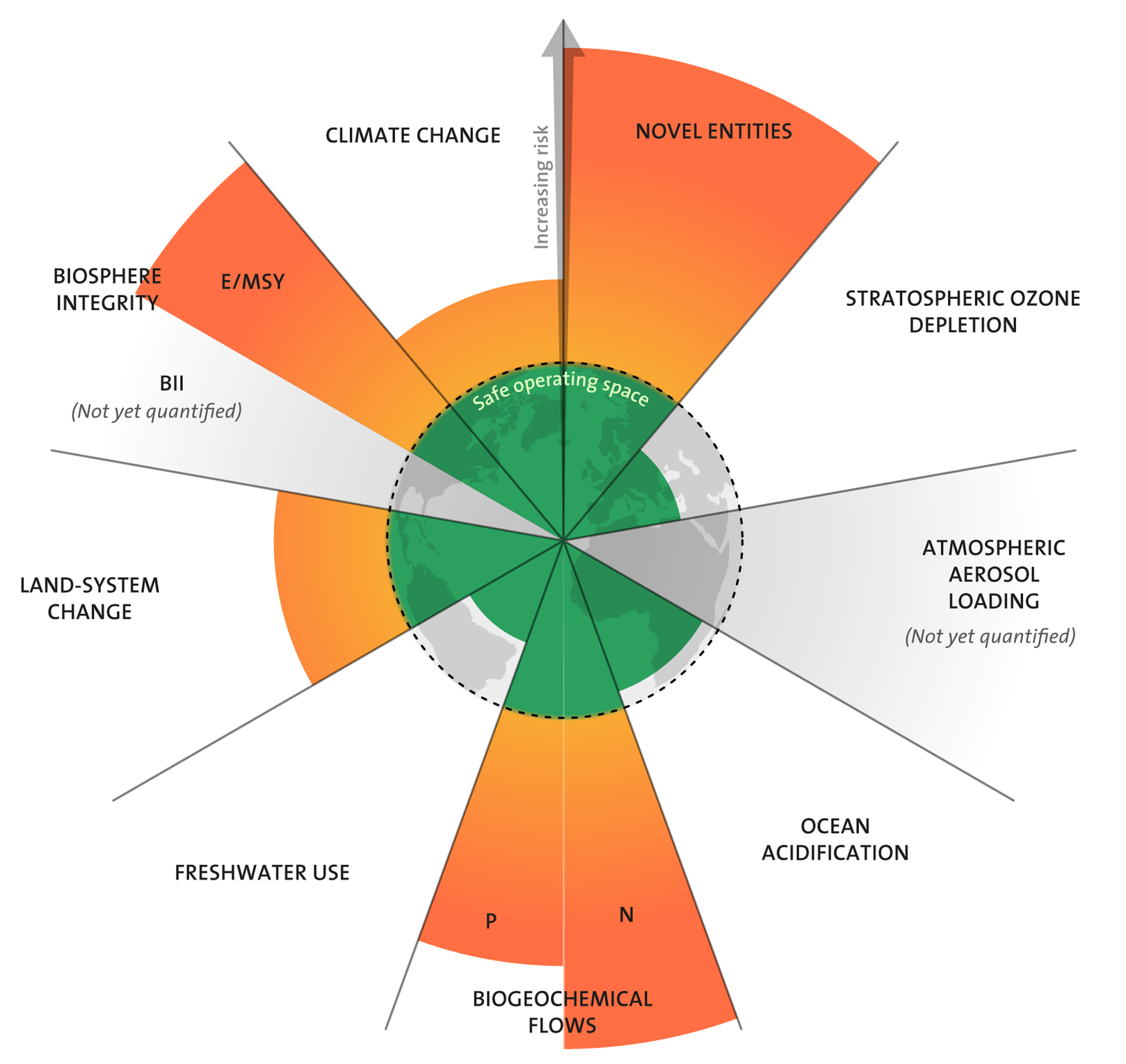Nine planetary boundaries
This is a useful diagram to share in order to demonstrate that we might think we’re shafted with regards to climate change, but that pales into insignificance compared to pollution from chemicals and plastics.

The researchers say there are many ways that chemicals and plastics have negative effects on planetary health, from mining, fracking and drilling to extract raw materials to production and waste management.Source: Safe planetary boundary for pollutants, including plastics, exceeded, say researchers | Stockholm Resilience Centre“Some of these pollutants can be found globally, from the Arctic to Antarctica, and can be extremely persistent. We have overwhelming evidence of negative impacts on Earth systems, including biodiversity and biogeochemical cycles,” says Carney Almroth.
Global production and consumption of novel entities is set to continue to grow. The total mass of plastics on the planet is now over twice the mass of all living mammals, and roughly 80% of all plastics ever produced remain in the environment.
Plastics contain over 10,000 other chemicals, so their environmental degradation creates new combinations of materials – and unprecedented environmental hazards. Production of plastics is set to increase and predictions indicate that the release of plastic pollution to the environment will rise too, despite huge efforts in many countries to reduce waste.